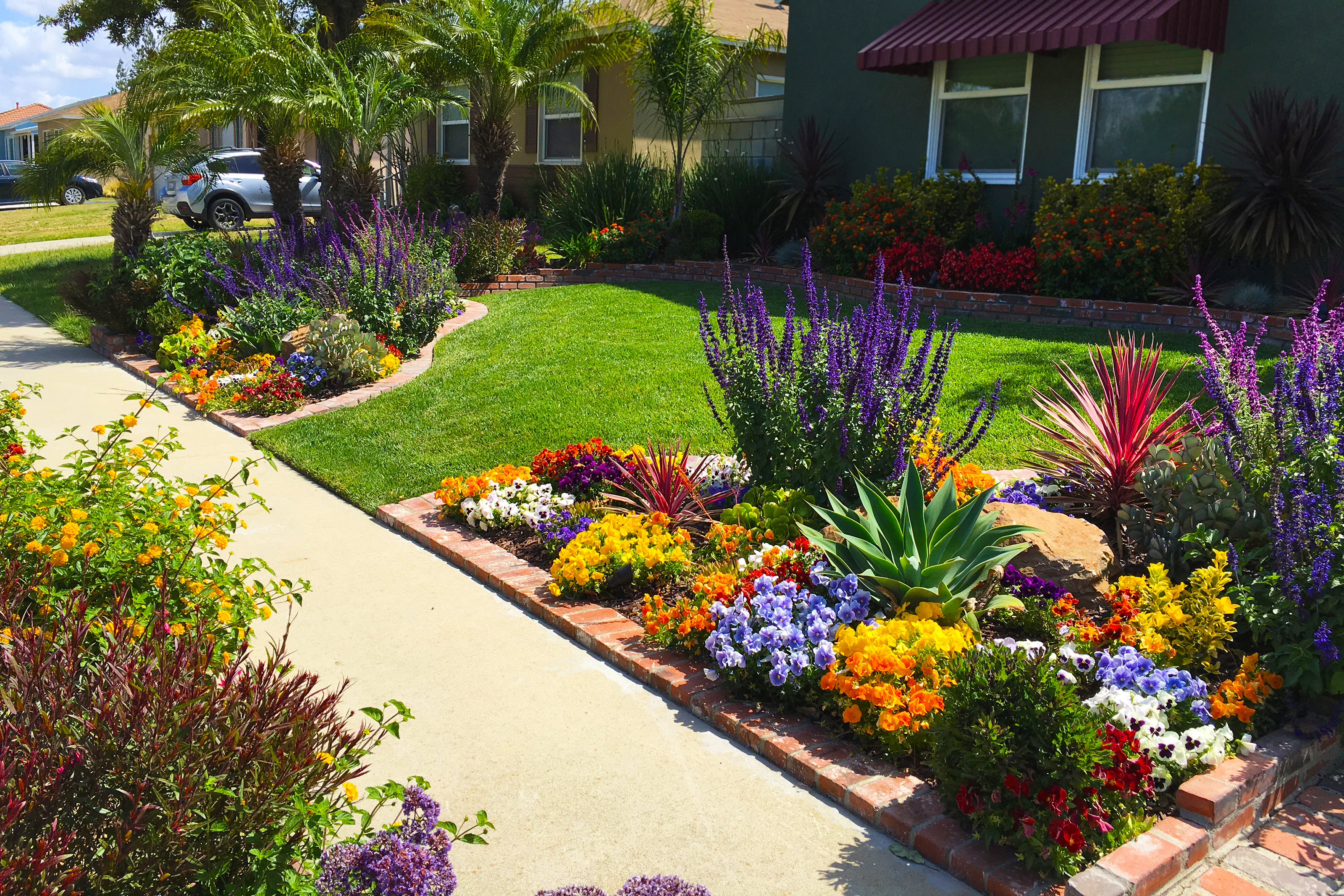Change Your Outside Room with Expert Palm Desert Landscaping Solutions
Change Your Outside Room with Expert Palm Desert Landscaping Solutions
Blog Article
A Comprehensive Overview to Creating and Implementing Effective Landscaping Solutions
The art and science of landscape design prolong past simple looks; they involve a thoughtful assimilation of design concepts, environmental stewardship, and functional implementation. What methods can one utilize to make certain these landscapes not only grow yet also prosper in consistency with their surroundings?

Comprehending Landscape Design Concepts
One could wonder what fundamental aspects contribute to reliable landscape layout. At its core, successful landscape design rests on a number of key concepts that assist the plan and option of aspects within a space. These concepts include unity, rhythm, equilibrium, and proportion, each offering to produce a harmonious exterior environment.
Unity describes the cohesive partnership among numerous components, making certain that they collaborate visually and functionally. Equilibrium can be accomplished via asymmetrical or in proportion setups, allowing the landscape to really feel secure and inviting. Percentage entails understanding the scale of components in relation to each other and the surrounding atmosphere, advertising visual consistency and convenience.

Assessing Your Outdoor Area
Prior to applying the principles of landscape style, a detailed assessment of your outdoor area is crucial. This first evaluation helps define the range of your landscape design task and makes certain that your design aligns with the distinct attributes of your building. Begin by analyzing the dimensions of your space, taking accurate measurements to comprehend the offered area for different aspects such as gardens, outdoor patios, and pathways.
Next, observe the existing functions of your landscape, including topography, soil quality, and drainage patterns. These factors substantially influence plant choice and placement. Additionally, assess the sunlight direct exposure throughout various areas throughout the day, as this will certainly influence the sorts of plants that prosper in your garden.
Consider the microclimates created by frameworks, trees, and various other challenges, as they can impact temperature and dampness degrees. Take note of any type of existing plants or hardscape elements that you desire to get rid of or maintain. This extensive evaluation lays the foundation for a reliable and knowledgeable landscaping option, guaranteeing that your layout is not just aesthetically pleasing yet lasting and likewise useful for many years to come.
Lasting Landscape Design Methods
These techniques not just promote environmental equilibrium but additionally improve the useful and visual value of a landscape. Executing efficient irrigation systems, such as drip watering, reduces water waste and makes sure that plants obtain adequate moisture (Palm Desert Landscaping).

An additional effective technique is the calculated positioning of bushes and trees to give all-natural windbreaks and shade, therefore reducing power costs (Palm Desert Landscaping). Rain gardens can be incorporated right into the landscape layout to manage stormwater runoff successfully, filtering system toxins prior to they enter waterways
Choosing the Right Plants
Choosing the right plants for your landscape is critical to attaining both visual appeal and ecological harmony. The process begins with an click over here now understanding of your regional climate, soil conditions, and the certain microenvironments within your landscape. Examining variables such as sunshine direct exposure, dampness levels, and existing flora will help you choose plants that thrive in your unique setting.
Consider incorporating indigenous plants, as they are well-adapted to neighborhood problems, call for much less upkeep, and support regional wildlife. Additionally, selecting a varied selection of varieties can improve biodiversity while minimizing the danger of disease and insect break outs. It is necessary to assess the growth habits, growing durations, and seasonal colors of potential plants to create a natural and vibrant landscape.
In addition, assume regarding the intended usage of the room; for example, if the area will experience high foot website traffic, select resilient ground covers. By thoughtfully selecting plants that align with both your visual objectives and environmental demands, you can develop a lasting landscape that not only boosts your property yet also adds positively to the bordering environment.

Implementation and Maintenance Methods
As soon as the right plants have been selected for your landscape, the emphasis changes to effective implementation and continuous upkeep approaches. Successful installation begins with appropriate website prep work, which consists of dirt testing to determine nutrient levels and pH, complied with by changing the dirt as required. Meticulously arrange plants according to their growth practices and light demands, making sure appropriate spacing to advertise healthy and balanced development.
Watering is an essential element of implementation. Establish a watering timetable that considers the specific needs of each plant species, adjusting for seasonal changes. Making use of drip watering systems can boost water performance and lower overflow.
Maintenance methods should be executed to guarantee the longevity and vitality of your landscape. Normal jobs include weeding, mulching, and pruning to control development and protect against illness. Fertilization ought to be conducted based upon dirt tests, offering the necessary nutrients without over-fertilizing.
Keeping track of for illness and insects is vital; early discovery can avoid substantial this link damage. Finally, seasonal adjustments to maintenance routines, such as winterizing perennials and preparing for spring development, will ensure that your landscape continues to be healthy and visually attractive year-round.
Final Thought
Successful application and recurring upkeep further ensure the long life and vitality of landscapes. By incorporating these elements, landscapes can be changed right into attractive, functional environments that promote biodiversity and contribute positively to community well-being.
One might wonder what foundational elements add to effective landscape style. At its core, successful landscape style hinges on several essential principles that direct the arrangement and selection redirected here of elements within a space.Selecting the right plants for your landscape is important to accomplishing both visual charm and ecological harmony. It is crucial to review the development routines, flowering periods, and seasonal colors of potential plants to develop a natural and vibrant landscape.
When the right plants have been picked for your landscape, the emphasis changes to effective application and continuous maintenance techniques.
Report this page